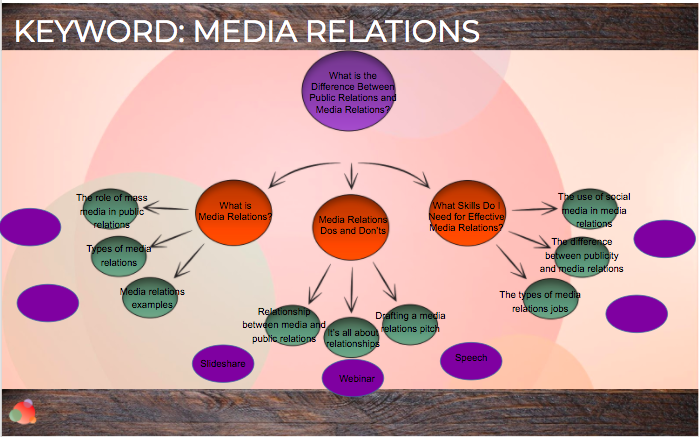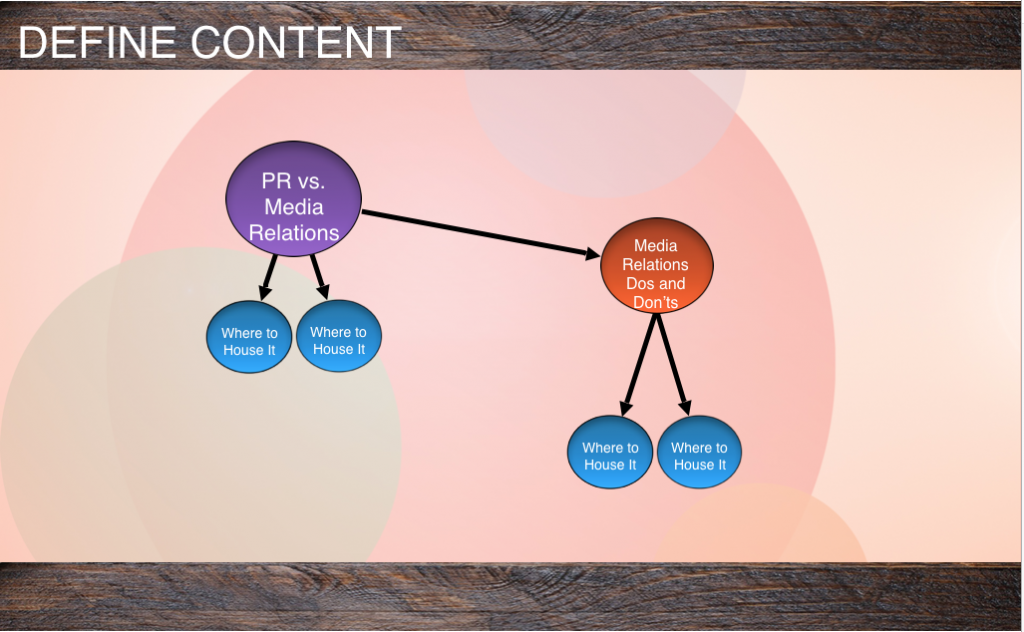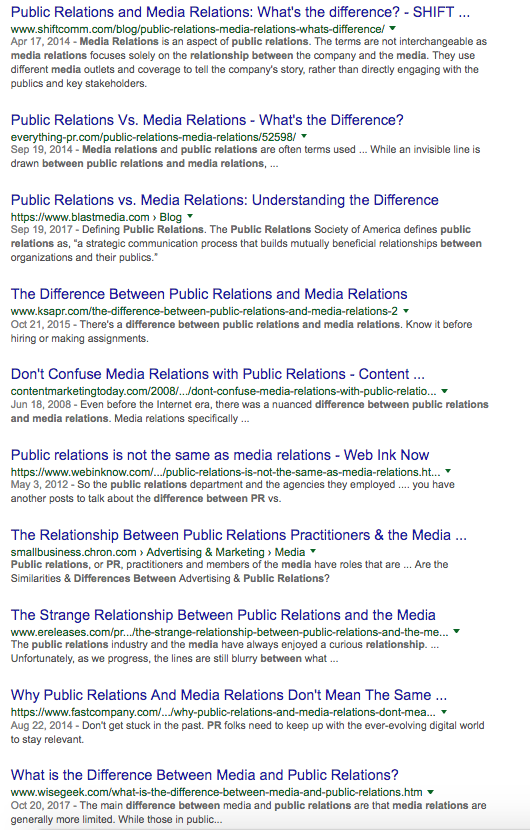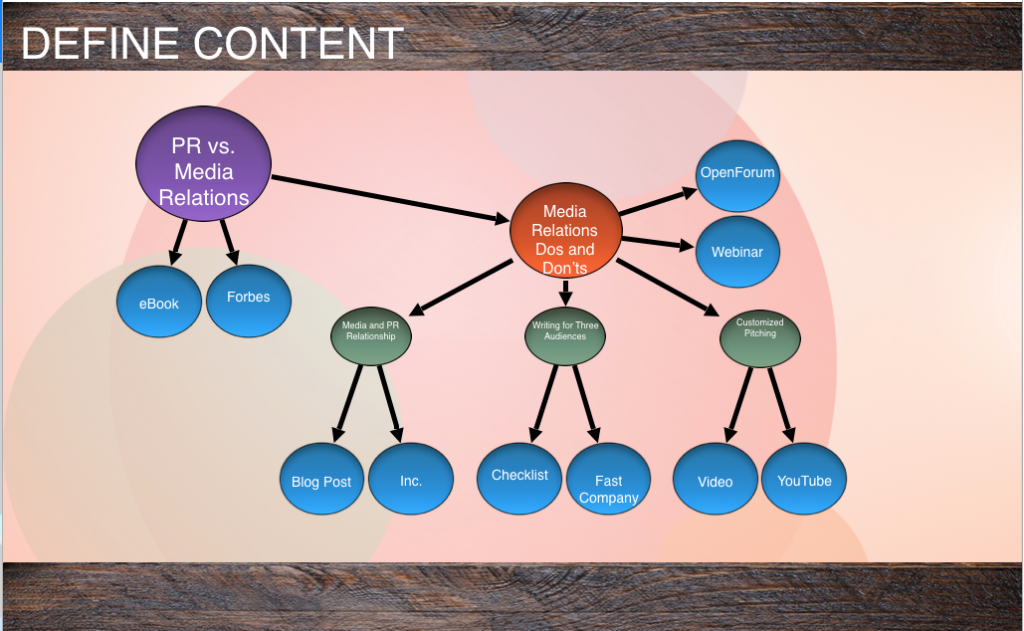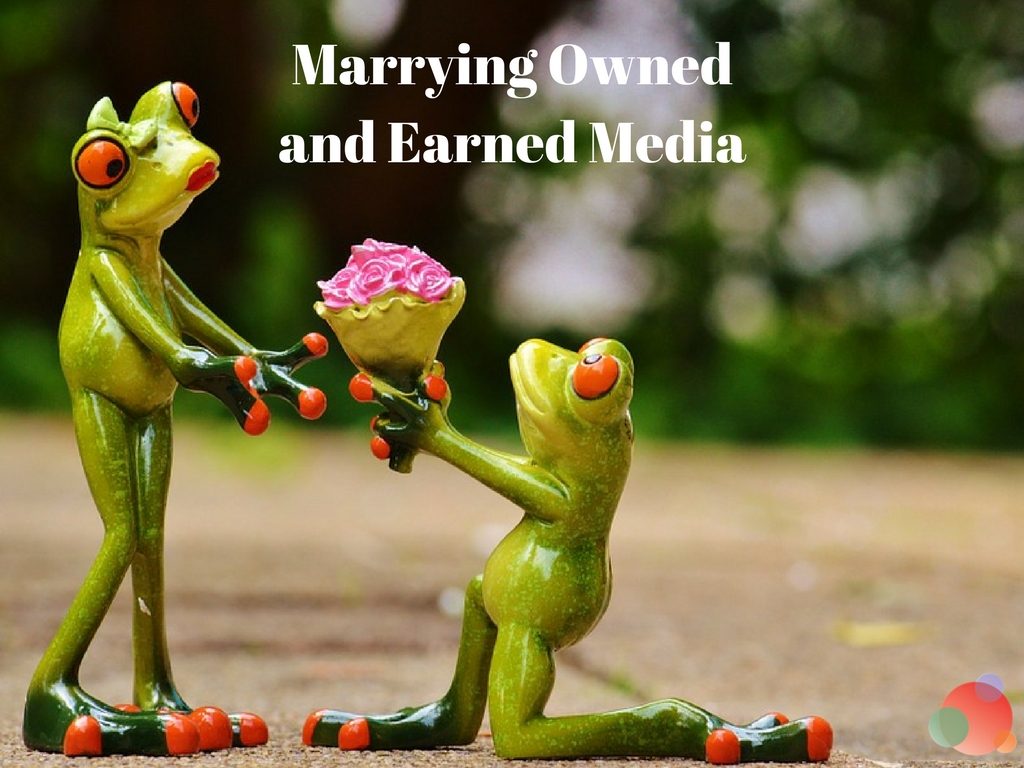 If you’ve been following along with the content creation series, you already have a plan and your research complete.
If you’ve been following along with the content creation series, you already have a plan and your research complete.
With both of those things finished, it’s time to create your content.
It can be blog posts, eBooks, presentations, videos, podcasts, white papers, infographics, visuals, and more.
Don’t limit yourself just to a blog post.
Now that you know what your priority keywords are, how many searches there are, and if you can compete, you will create content that is highly strategic.
The kind that will work for you while you sleep…or ski…or cycle…or lay at the beach…or whatever the heck you want to do.
And, once your content is published, it’s time to put it to work even further by integrating it with earned media.
Craft Your Media List
Before you begin your content creation and before you start pitching your little heart out, you want to craft a very targeted and very small media list.
To put your owned media and earned media integration plan into practice, you have a few decisions to make.
For instance, you could decide that January is your media relations month.
You are going to talk about everything from why it’s important to how do you measure it over the course of that month.
If you blog every business day—and your content map already has 13 topics—that leaves you with another seven topics to come up with for the rest of that month.
Just like you did in the research phase of creating something similar to the image above, you’ll wan to add seven topics.
What Kinds of Content Will You Produce?
Now here’s where things get a little more complicated.
You still have to create the content—and you still have to figure out what form it will be.
Take one of your subtopics—in this case we’ll use, “Media Relations Dos and Don’ts—and your main topic—”What is the Difference Between Public Relations and Media Relations?”
Put them both into a detailed content map you can use to identify what form it is going to take and where it’s going to be published.
For the subtopic, “Media Relations Dos and Don’ts” and each of its three supporting bases, I’m going to write a blog post for Spin Sucks.
Once all three of those posts are completed, I’m going to repurpose their content as a Spin Sucks eBook.
(If you are following along in this content creation series, you’ll be now have figured out that’s precisely what I’m going to do when I’m finished.)
That means I’m going to write each of these posts, while keeping in mind that they will be eventually combined into one publication, so I won’t want to vary their tone or style too much from piece-to-piece.
Do NOT Skip This Step
Now it’s time to marry owned media with earned.
You are going to do some guest blogging on the topic—in this case, media relations.
It’s very, very important you do not skip this step because earned media is where you’ll get the high-quality link back to your site that Google values.
If you don’t get the link (or links), your content will probably just hang out on page two of search results and not work for you while you sleep.
But if you marry your owned and earned media, Google will see you’re not only an expert on the topic, other highly valuable sites do, too.
I’m going to repeat this again: it’s very, very important you do not skip this step.
Go back to the Google search on your main and subtopics—just the ones you’re using for this exercise—and look to see what media outlets and blogs show up in results.
For my main topic—”What is the Difference Between Public Relations and Media Relations?”—there are a few places I can pitch content.
They include the SHIFT blog, Content Marketing Today, eReleases, and Fast Company.
I might also do some research into the others to see if they take contributed content and if their domain authority is high enough (higher than 65, in my case) for it to matter.
It doesn’t hurt to go to pages two and three of search results to broaden your media list.
Once that work is complete, you’ll add them to your content map.
You Have an Unfair Advantage
This part of your content plan is where you, as a PR pro, have an unfair advantage over other content marketers.
Even if you’re only a year out of school, you know how to pitch an editor.
And that’s exactly what you’re doing here.
Now that this part of your content creation is complete, you can take one last look at some of the other places that take content.
For instance, I know that Forbes, Inc., and OpenForum all take contributed content, and that they each talk about PR in some fashion.
It’s smart to add them to the content map because they all have great domain authority to help increase our content’s value.
And now it’s time to pitch!
In your email to the contributed content or guest post editor—whichever term they use—introduce yourself and note you are interested in writing a piece about your main topic.
In this case, it would be on the differences between media relations and public relations or on the dos and don’ts of media relations.
You can do almost any media relations article you want—it doesn’t have to stay within your content map topics.
But it does have to be on the topic because…
I Call Baloney
…you are going to link to something you published on your own site in your contributed piece.
This is the part where every communicator on earth gets tripped up.
EVERYONE says:
No one will include my link!
That just isn’t true.
Because we are people pleasers by nature, we’re scared to ask media outlets and blogs to include our links.
But in all of the years I’ve been doing this, I’ve only seen two publications refuse—TechCrunch and MediaPost.
My advice for those two publications is to avoid them.
You can pitch them for other stuff, but for your content creation plan, they are not useful to you.
Without a link to your incredible content creation masterpieces, earned media will do you no good.
You have to, have to, have to get a link from them to you.
No excuses.
No exceptions.
Just do it.
An Example of Content Creation at Work
Let me give you an example.
I’ll start my pitching by emailing Forbes.
I’ll introduce myself and note I am interested in writing a piece on how to build brand awareness using media relations.
When I write that article, I’ll make sure to include a relevant link to my brand awareness post on Spin Sucks.
Next, I’ll reach out to Inc., and say I’d love to write a piece on how media relations drives qualified leads.
And, in that article, I’ll be sure to link back to the blog post on that same topic on Spin Sucks.
Finally I’ll reach out to OpenForum and say I’d love to write a piece on how to build reputation using media relations, and be sure once again to link back to my relevant article on the Spin Sucks blog.
Now I have four pieces of content on Spin Sucks, and three pieces of content on websites that have a higher domain authority than us that are linking back to that content on Spin Sucks.
Linkbacks from high domain authority sites are a primary way to gradually increase your domain authority over time.
Perception = Reality
This also gives me the opportunity to own more than one slot on the first page of Google results for my topic, as I now have four different domains where I’ve written about this content.
If all three of my guest articles rank, plus at least one of my Spin Sucks articles, that means that when someone searches “media relations” in some form, they have a 40 percent chance of clicking on a link to one of my pieces on the topic.
Also, from a perception standpoint, the person searching is going to see your byline repeated, and be familiar with at least some of the publications, and say,
Wow, that Gini Dietrich person must really know her media relations stuff, I should give her a call.
Everything I’ve written—both on Spin Sucks and on media sites—owns 40 percent of the first page of Google results.
You can pretty much get rid of any competition if you really work at this.
Content Creation Doesn’t Happen in a Vacuum
I know this seems like a lot of work, but once you get the hang of it, you can do it really quickly.
It does take some elbow grease and lots of questions at the start.
We are here to help!
There are three ways you can ask questions and get the help you need:
- If you have a short question that can be answered in a couple sentences, leave a comment here.
- If your question is longer, but not complicated, you can join our free Spin Sucks community. There are nearly 1,000 members there who will help you any way they can.
- If you want to work directly with me or someone from the Spin Sucks team, check out the other ways you can work with us. There are fees, but this may be the easiest and fastest way to get this work done without a lot of pain.
Also, those of you who write on communications topics with a domain authority of less than 65 will want to note we accept contributed content.
And we won’t tell you no about including a link.
Keep us in mind as you’re completing the guest blogging component of your content maps.
